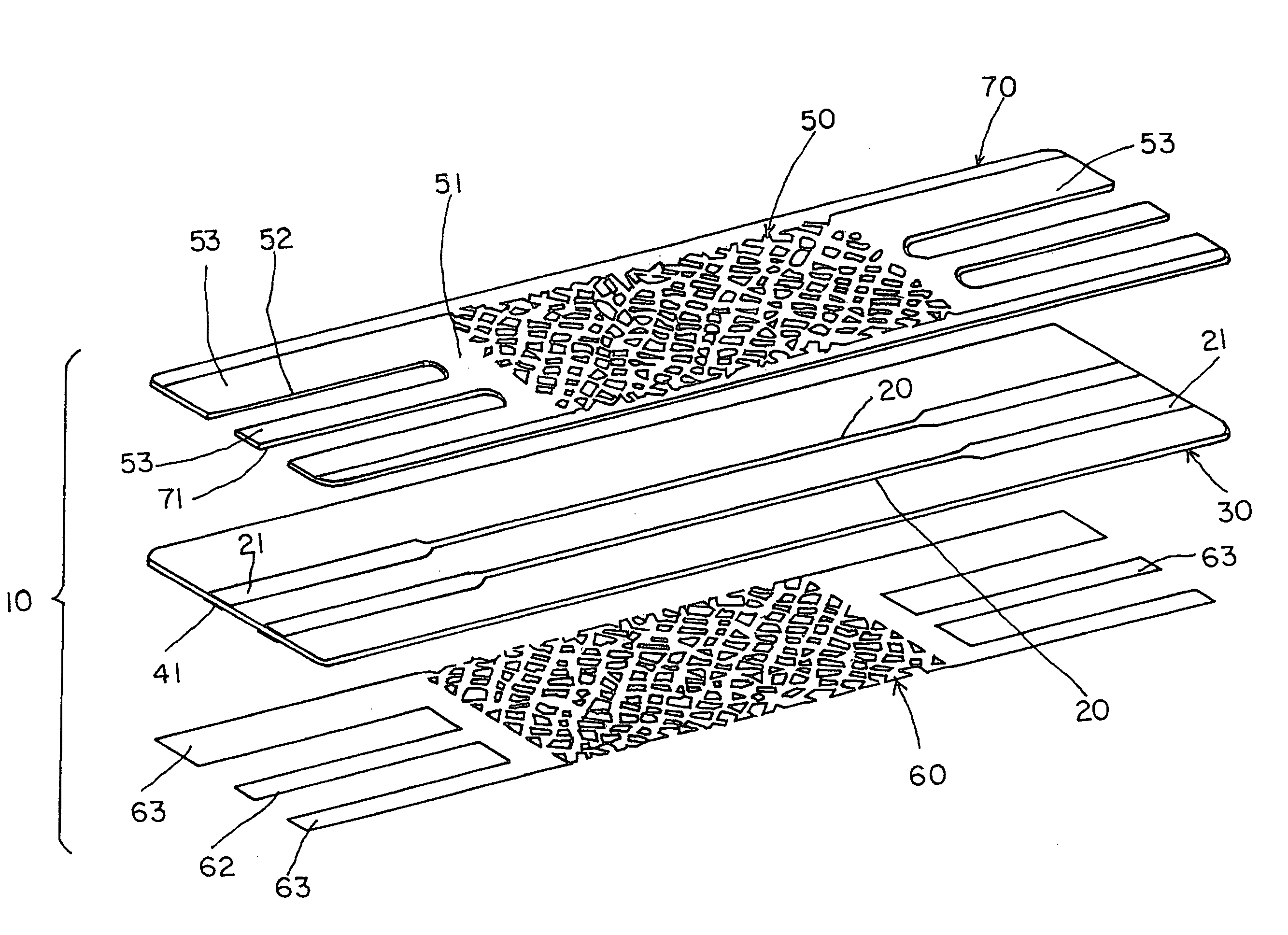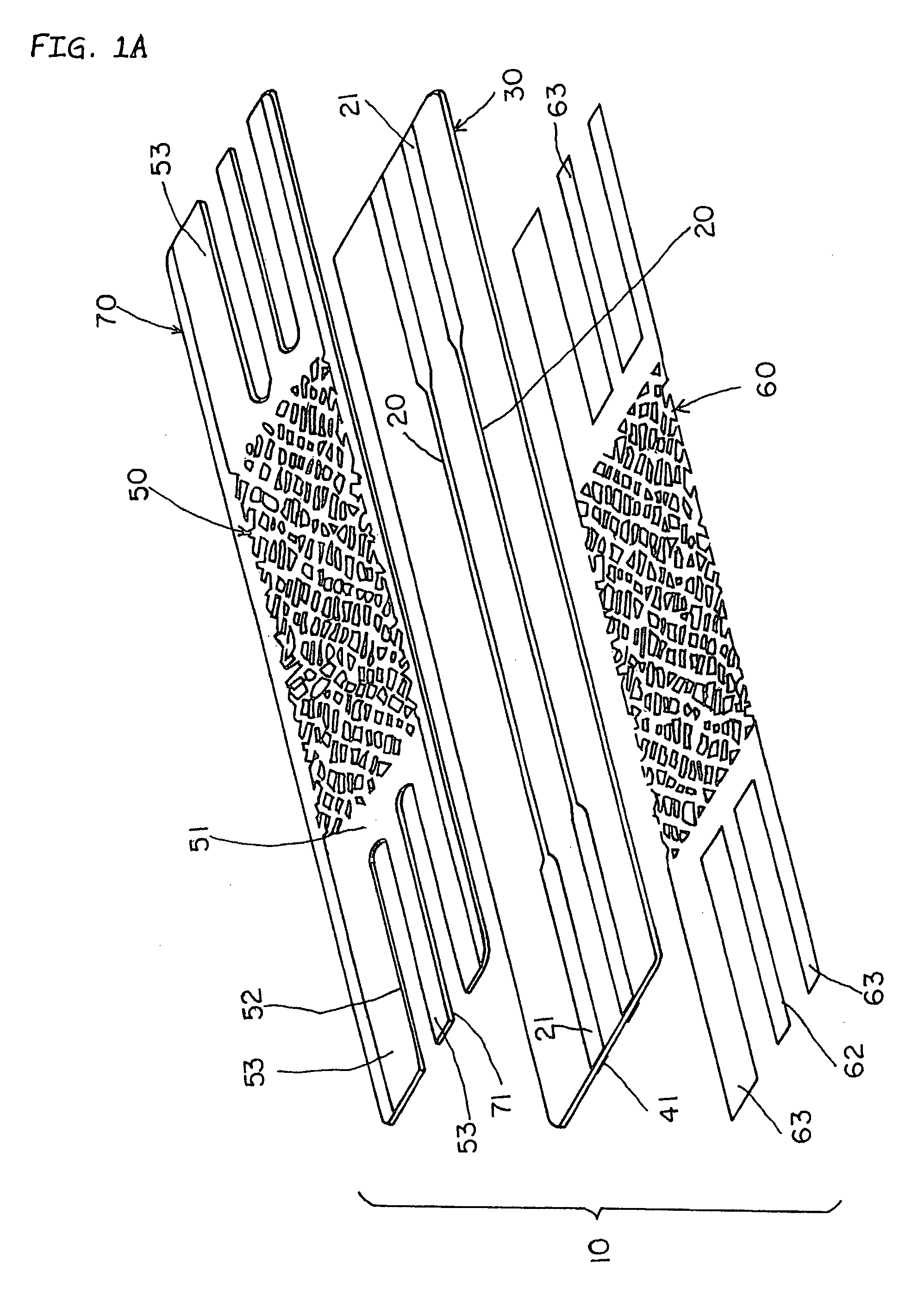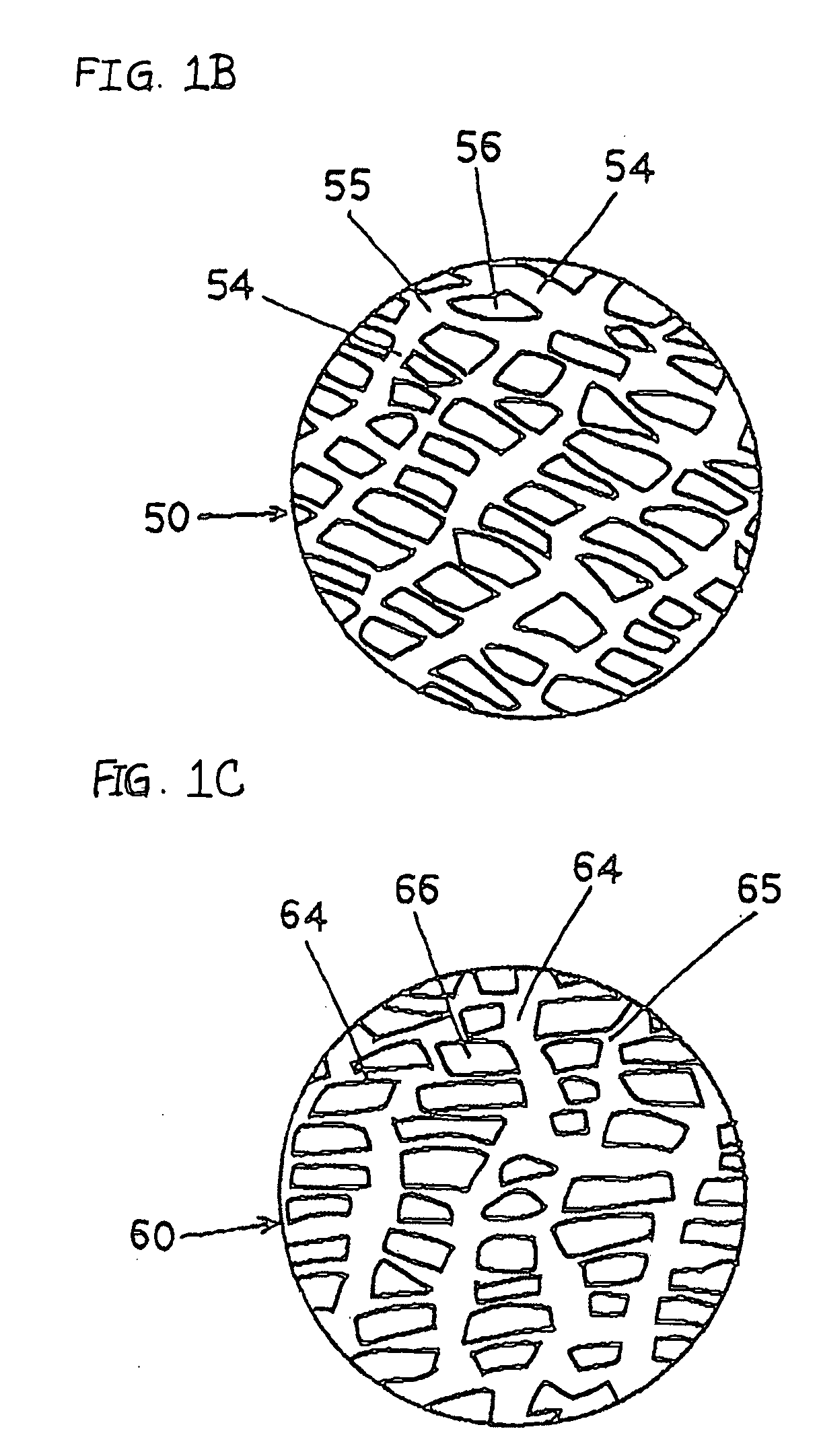Flat flexible circuitry
a flexible circuit and signal transmission technology, applied in the direction of flat/ribbon cables, waveguides, high-frequency circuit adaptations, etc., can solve the problem of limited degree of freedom in overall adjustment of ffc, and achieve the degree of freedom of tuning the characteristic impedance of the signal line, improve the electromagnetic shielding effect, and increase the degree of design freedom
- Summary
- Abstract
- Description
- Claims
- Application Information
AI Technical Summary
Benefits of technology
Problems solved by technology
Method used
Image
Examples
Embodiment Construction
[0027]FIG. 1A shows a signal transmission line in the form of an extent of flat, flexible cable (“FFC”) 10 according to one embodiment of the present invention in the state of being exploded. As shown, on one surface of a flexible insulative substrate 30 extend two signal lines 20 from one to the other end, which signal lines 20 end with signal contact pads 21 at each end of the substrate 30. Dummy contact pads 41 are arranged on the other surface of the substrate 30 and are aligned with (on in onfronting relationship with) the overlying signal contact pads 21 on the one surface of the substrate 30. Two grounding contact pads 63 are arranged on each end of the substrate 30 and are arranged in parallel widthwise along the substrate. The dummy pad 41 is the same as the grounding contact pad 63 in shape and thickness. The dummy pads 41 on the opposite ends of the substrate are not interconnected lengthwise along the substrate, although this is not shown in FIG. 1A.
[0028] Net-like cond...
PUM
| Property | Measurement | Unit |
|---|---|---|
| conductive | aaaaa | aaaaa |
| size | aaaaa | aaaaa |
| shape | aaaaa | aaaaa |
Abstract
Description
Claims
Application Information
 Login to View More
Login to View More - R&D
- Intellectual Property
- Life Sciences
- Materials
- Tech Scout
- Unparalleled Data Quality
- Higher Quality Content
- 60% Fewer Hallucinations
Browse by: Latest US Patents, China's latest patents, Technical Efficacy Thesaurus, Application Domain, Technology Topic, Popular Technical Reports.
© 2025 PatSnap. All rights reserved.Legal|Privacy policy|Modern Slavery Act Transparency Statement|Sitemap|About US| Contact US: help@patsnap.com



